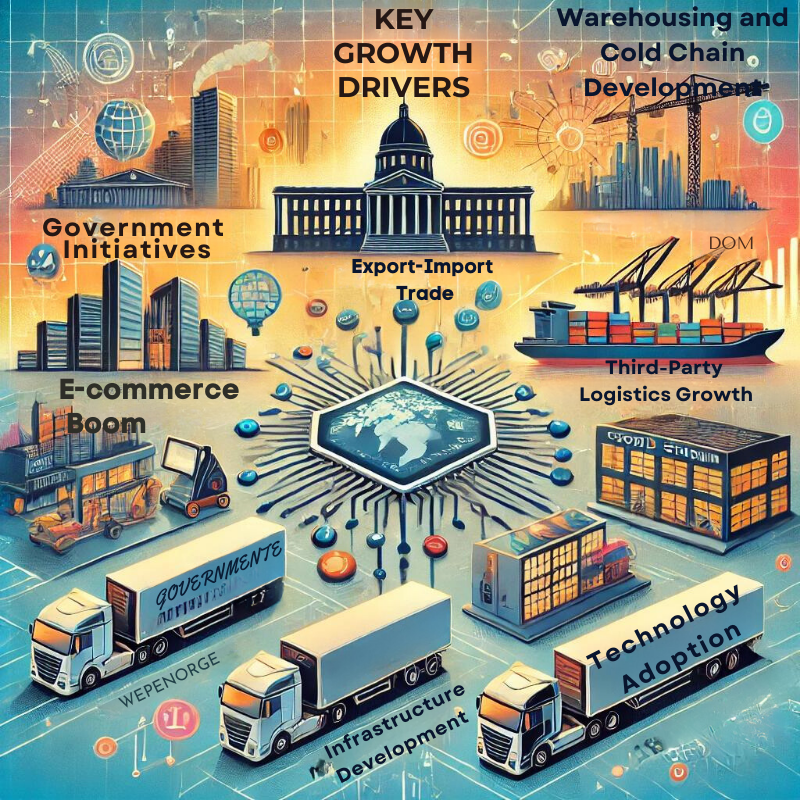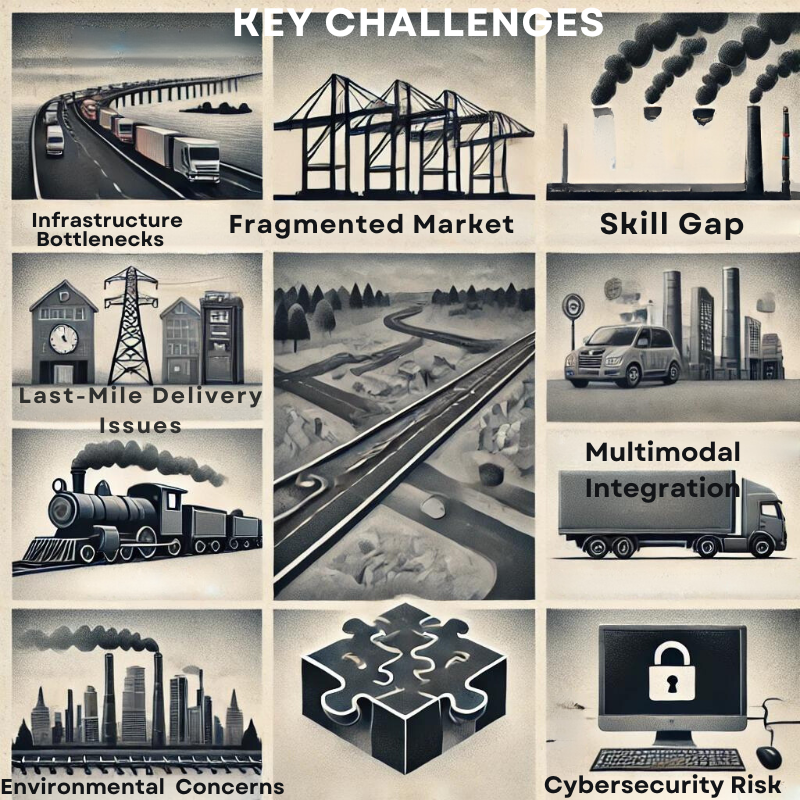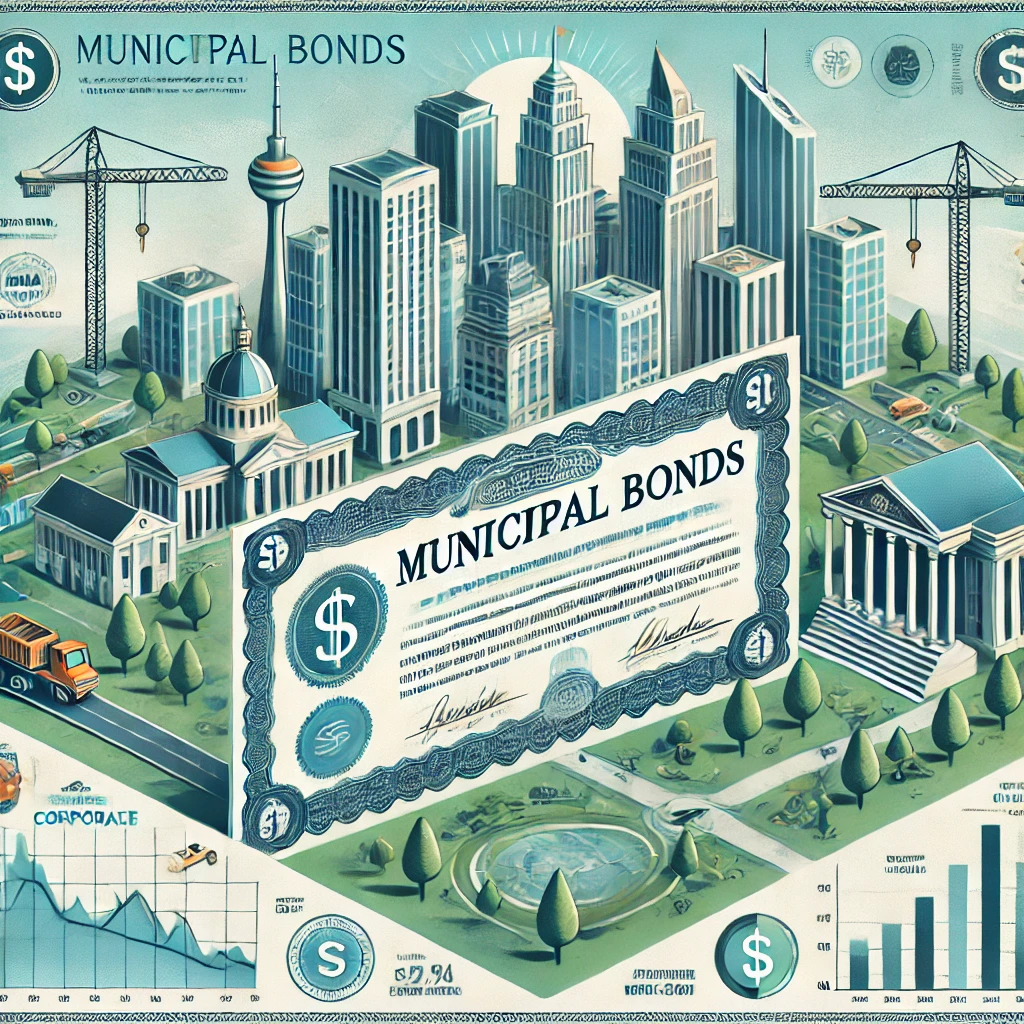Logistics industry in India is on an impressive growth path, projected to reach a market size of ₹35.3 trillion by 2029. All these have been driven by government policy initiatives such as the National Logistics Policy and Gati Shakti to reduce costs and enhance efficiency. The sector is evolving rapidly with improvements in infrastructure and technology adaptation. Challenges, however, remain in the form of infrastructure bottlenecks and skill gaps. All these need to be addressed for India to make its logistics sector more efficient, cost-effective, and globally competitive.
| GS Paper | GS Paper III |
| Topics for UPSC Prelims | India’s logistics industry, National Logistics Policy, Gati Shakti, E-commerce, Dedicated Freight Corridor, Mega Food Parks, India-Middle East-Europe Economic Corridor, Mega Food Parks, Jawaharlal Nehru Port |
| Topics for UPSC Mains | Key Drivers to the Growth of India’s Logistic Sector, Key Issues Related to India’s Logistics Sector. |
Origin of the Article
This editorial is based on “How the logistics industry is positioned in India,” published in The Hindu Business Line on 18/09/2024. The article discusses the rapid growth of India’s logistics industry, highlighting improvements and challenges in the sector.
Relevance for UPSC Aspirants
This subject is of immense importance for UPSC aspirants as it goes on to touch several very important areas of the UPSC syllabus, namely, infrastructure, policies, and economic development. The understanding of logistics and its role in economic growth also helps identify how intervention by the government can influence industrial sectors, thus aiding comprehensive exam preparation.
Why in News?
The logistics sector’s growth is crucial for UPSC aspirants, reflecting India’s economic transformation and infrastructural advancements. With the National Logistics Policy and Gati Shakti initiatives, this topic links to UPSC’s emphasis on infrastructure and government interventions. Previously, logistics-related questions, like Gati-Shakti Yojana (2022), highlight its relevance.
Growth of India’s Logistics Industry
India’s logistics industry is gaining pace wherein the market size will see an estimated ₹35.3 trillion by FY 2029. The sector is transforming with better efficiency as investments in logistics currently account for 13% of GDP and are likely to decline in coming years. This trend is spurred by sharp trends within the transportation segment, wherein roadways feature prominently at present and rail infrastructure investments promise to redefine modal mix.
Market Size and Growth Rate
India’s logistics market has been growing at a high CAGR of 11% from 2019 to 2024. Going forward, it is expected that with the size of the market standing at ₹35.3 trillion by FY 2029, it will continue to be an upward trajectory for logistics as this trend indicates the increasing demand for efficient services in logistics. The aspect of growth of such an industry is further propelled by a booming economy, technology, and resultant progressive infrastructure, making it paramount for India’s economic scenario.
Current Logistics Expenditure
Today, logistics costs in India are as high as 13% of GDP, though this is likely to decline as efficiency-enhancing efforts are under way. The percentage should reduce toward high single digits as the Indian economy formalizes and connectivity improves. Reducing that percentage is an indicator of a more efficient logistics sector, which is essential for competitiveness.
Transportation Segment Overview
The transportation section of India’s logistics industry is primarily dependent on roadways as of FY 2021. However, significant investments in rail infrastructures are likely to change this scenario. Shifting towards railways would help in the optimal management of the modal mix, improve connectivity, and hence increase overall efficiency in logistic operations, which in turn will also benefit in terms of cost savings along with environment-friendly benefits.

Key Drivers to Growth
Government policies in India, e-commerce growth, and infrastructures are some of the primary reasons for growth in the logistics sector. These together with the growth of third-party logistics providers, technology adoption, and shifts in the market demand are seeking to transform logistics from an inefficient and unresponsive sector into an efficient and responsive sector.
Government Initiatives and Policy Support
Other pivotal initiatives in the Indian government include the National Logistics Policy (NLP) and PM Gati Shakti which have enhanced logistics growth. The NLP sets a target of reducing logistics costs to global averages by 2030, while Gati Shakti has focused on the development of multimodal connectivity. These are some of the policies deemed major in creating efficiency as well as reducing costs in the sector.
E-commerce Boom and Last-Mile Delivery
The e-commerce sector in India is growing at a CAGR of 27% and is likely to touch USD 163 billion by 2026. This boom will require efficient last-mile delivery services, thus raising specialist logistics companies such as Delhivery. Due to the pandemic, demand for strong logistics networks to suit shift in consumer preferences has risen.
Infrastructure Development
Mass investments in transportation infrastructure, be it highways or Dedicated Freight Corridor (DFC), are important for logistics growth. Planning to enhance connectivity and lower transit times has seen a commitment of ₹111 lakh crore from the government to the National Infrastructure Pipeline, thus making logistics more efficient and cheaper.
Technology Adoption and Digitalization
All the emerging technologies such as AI, IoT, and blockchain are coming together in India’s logistics sector. They improve operational efficiency, increase transparency, and allow for real-time tracking. Companies like Rivigo are using the application of AI to optimize routes, while digital solutions such as e-way bills improve the movement of goods and also promote sectoral transformation and attract investments.
Rise of Third-Party and Fourth-Party Logistics
The complexity of supply chains has spurred the growth of 3PL and 4PL providers in India. These entities offer comprehensive logistics solutions, allowing businesses to focus on core operations. The India third-party logistics market is forecasted to grow significantly, reflecting an outsourcing trend that enhances efficiency and drives sectoral growth.
Warehousing and Cold Chain Development
Modern warehousing and cold chain infrastructure is the biggest growth driver. GST has introduced warehouse consolidation, which attracts investments and leads to large logistics parks. Other government initiatives like Mega Food Parks and PMKSY encourage the development of cold chains to ease the risk of spoilage and enhance storage capabilities.
Growing Export-Import Trade
This enhances logistics demand in India because of its integration with international trade. Merchandise imports and exports have risen despite the difficulties, and thus efficient logistics services are required. Trade connectivity is being driven by agreements such as the India-Middle East-Europe Economic Corridor (IMEC), and strong maritime and multimodal solutions have already become necessary in these circumstances.

Key Issues Related to India’s Logistics Sector
Key issues in the Indian logistics sector are infrastructure bottlenecks and market fragmentation. Success in these two key areas, and indeed support functions such as skill gaps and environmental concerns, would be necessary to provide a further boost towards efficiency in that sector’s sustainable growth.
Infrastructure Bottlenecks
Investments aside, infrastructure bottlenecks continue to detract from logistics efficiency. Roads that are of poor quality, ports clogged with mess, and underdeveloped railway connectivity delay and add cost. India ranks relatively low on the Logistics Performance Index of the World Bank, significantly including the quality of infrastructure in need of a redemptive push for logistics operations.
Fragmented and Unorganized Market
Here, in the Indian logistics sector, more than 90 percent falls in the unorganized sector. This fragmentation betrays the weakness of lack of standardization and proves inefficiencies. This fragmentation prevents the easy implementation of full-scale technology. These are challenges to overcome for uniform regulations, increased quality standards, and sectoral competitiveness improvements.
Skill Gap and Workforce Challenges
A significant skill shortage prevails in the logistics industry; this is mainly turning out to be a growth-constraining factor. The sector is expanding at a very fast pace, but still, the sector faces severe shortages of talented professionals, especially in supply chain management and more generally, in respect of the use of technology. Programs like Pradhan Mantri Kaushal Vikas Yojana have focused on addressing this shortage, but the need would be to be more target-oriented to address the issue of meeting industry demands.
Last-Mile Delivery Challenges
Such growth of e-commerce deepens the challenge of last-mile delivery, especially in urban areas. Inefficient addressing systems and limited parking have added to a cost that may be higher than that in other delivery modes. With such challenges, innovation in the form of drone delivery is experimented with, yet hurdles remain as far as regulatory and infrastructural conditions are concerned, which suggests a need for efficient last-mile logistics solutions.
Environmental Concerns and Sustainability
The logistics sector is one of those sectors that faces pressure to reduce the environmental impacts encountered, including carbon emissions. Despite the setting up of its targets by the government, the adoption of green practices within the sector is slow. The major reasons for this include limited EV infrastructures and high costs. It is essential to address these challenges to meet the sector’s sustainability goals and minimize its carbon footprint.
Multimodal Integration Challenges
Effective multimodal integration is still an area of challenge in the Indian logistics sector. Road transport is still a leader in freight movement, thus bringing its costs up. The Dedicated Freight Corridors project is also behind schedule, again affecting logistics efficiency.
Cybersecurity and Data Protection
Nonetheless, advances in logistics digitization come with fears on cybersecurity issues. To start, most logistics firms, SMEs included, have not yet installed the appropriate security configurations, hence making them highly susceptible to different forms of threats that could be jeopardizing in nature. The need to bridge these vulnerabilities is therefore paramount in protecting digital transformation and ensuring that the sector remains resilient to cyber threats.
Steps to Strengthen India’s Logistics Sector
The multi-dimensional approach to developing logistics in India is quite crucial- the development of infrastructure, smoothing out regulatory hurdles and embracing technology. Then, the improvement of the efficiency and competitiveness of logistics will bring India into the global fold.
Accelerate Infrastructure Development
Enhancing logistics efficiency requires fast-tracking key infrastructure projects. Projects like Dedicated Freight Corridors and connectivities to major ports will reduce transit times by orders of magnitude. The implementation of a good monitoring system on projects will ensure timely completion and optimize logistics infrastructure.
Streamline Regulatory Processes
The introduction of the single window clearance system and harmonizing regulations at the state level would help in creating an integrated national market, thus reducing compliance burdens. The ease of doing business in the logistics sector would be enhanced through the process of digitizing customs documentation and regulatory procedures.
Promote Technology Adoption
Incentives to indigenously inculcate advanced technologies like AI, IoT, and blockchain can transform the logistics operation. Support for startups and scale up of such platforms as ULIP will accelerate innovation. Tax benefits and subsidies for technological adoption will encourage widespread technology integration across the sector.
Enhance Skill Development
Revamping logistics education and training is a serious concern that would address the existing gaps in skills. Once such institutes are in place, with industry partnerships established, curricula will align more closely with the needs of the industry.
Improve Warehousing and Cold Chain Infrastructure
Optimizing warehousing and cold chain infrastructure would be important steps in optimizing logistics operations. A national warehousing grid, along with fiscal incentives for modern facilities, would improve storage conditions and enforce standards that would incentivize upgrading, helping agriculture, pharmaceuticals, and so on.
Promote Multimodal Transportation
Easy and smooth modes of transition are through developing integrated multimodal logistics parks. Shifting cargo from more expensive modes of transport to efficient modes of transport, like rail and waterways, with incentives to do so, is sure to increase logistics efficiency. Private sector participation through PPPs will lead faster in the development of multimodal infrastructure faster.
Enhance Cybersecurity Measures
With the advancement of logistics digitization, there is an acute need to strengthen its cybersecurity aspect. Developing sector guidelines and enforcing mandatory audits would bring improved security. The formation of a core emergency response team and support for SMEs would further harden the aspect of cybersecurity resilience in logistics operations.
Promote Green Logistics
The promotion of green logistics would also reduce the environmental footprint. An increase in carbon credit trading, tax breaks on green investments, and the establishment of green corridors would encourage the practice of sustainability. A national certification program on green logistics would honor efforts toward the reduction of carbon footprints.
PESTEL Analysis
| Political: Government initiatives like the National Logistics Policy and Gati Shakti are reducing logistics costs and enhancing connectivity, with streamlined regulations and policies aimed at infrastructure improvement and bureaucratic reduction. Economic: The logistics sector is projected to grow to ₹35.3 trillion by 2029, driven by infrastructure investments and e-commerce expansion. Economic challenges include the high costs associated with transitioning to green logistics and overcoming infrastructure bottlenecks. Social: There is a notable skills gap in the logistics sector, affecting efficiency and growth. Social impacts include job creation and the need for specialized training programs to meet industry demands. Technological: Technology plays a transformative role with the integration of AI, IoT, and digital tools like e-way bills enhancing operational efficiency and transparency. However, increased digitalization raises cybersecurity risks, necessitating robust security measures. Environmental: Environmental challenges focus on reducing the logistics sector’s carbon footprint and promoting sustainable practices, which are currently hindered by high implementation costs and insufficient infrastructure. Legal: The logistics sector is impacted by legal factors including the need for uniform regulations across states and supportive policies for multimodal transport and international trade, which help reduce trade barriers and enhance connectivity. |
Conclusion
India’s logistic sector is growing at a rapid pace with initiatives like Make in India, infrastructural development, and adoption of technology. Multi-modal transport, digitalization, and green logistics are key areas that can improve efficiency and reduce costs, and thus make India’s logistics industry competitive globally. Policymaking and current implementations in this sector require a deep understanding by aspiring civil servants.
| UPSC Civil Services Examination, Previous Year Questions (PYQs) Mains Q. What are the impediments in marketing and supply chain management in developing the food processing industry in India? Can e-commerce help in overcoming these bottlenecks? (UPSC GS Paper 3 – 2015) Q. Discuss the role of the National Logistics Policy in enhancing India’s trade competitiveness. How does it complement the Gati Shakti initiative and the Dedicated Freight Corridor? |



